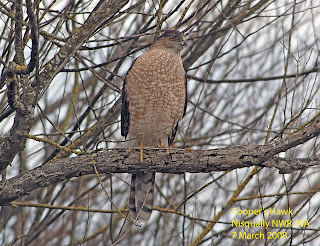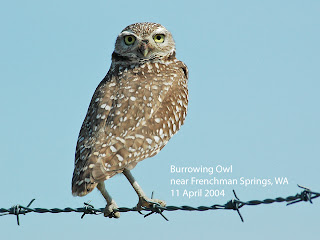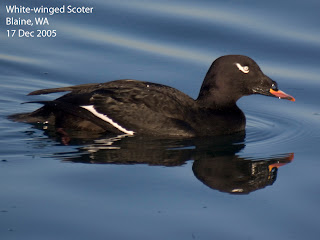This is the time of year when our resident birds begin to sing. Already I have heard Anna’s Hummingbird, Bewick’s Wren, American Robin, Varied Thrush, European Starling, House Finch, Song Sparrow, and Dark-eyed Junco singing around my house. On the other hand, the vast majority of migrant species have not arrived yet, and those residents that are singing won’t be breeding until some time in April.
Why don’t all birds breed at the same time? Well, an easy explanation for raptors is that their incubation periods are long, so it behooves them to breed before many other species, so they have eggs hatching at a time when food resources are high. As it turns out, the eggs of the early breeders hatch at a time when many local mammals are weaning young.
Some species, for example raptors such as Barn and Great Horned Owls and Red-tailed Hawks, have already begun their breeding cycles. A Northwest pair of Red-tailed Hawks could have a complete clutch of three eggs laid by March 20. The first egg would hatch in mid April, and young would be ready to leave the nest by the end of May.
The bird-eating accipiter hawks (Cooper’s, Sharp-shinned) begin to breed later than the mammal eaters, because the supply of naïve young birds doesn’t really kick in until May or June. A Cooper’s Hawk pair that lays the first egg of a clutch of four on April 15 would expect the first young to hatch on May 20 and the first young to fledge about a month after that. By the end of May there are great numbers of young, naïve birds in the surrounding woodland that can provide prey for a family of Cooper’s Hawks.
A Barn Owl that laid her first of six to eight eggs on March 10 would see the first young hatch on April 10 and fledge in about two months. By hatching time, great numbers of young voles would have emerged from their grass nests to forage in their myriad runways, and the parents can find plenty of protein for their growing young. Furthermore, a just-fledged owlet should have no trouble detecting and catching those furry snacks.
Mammal-eating owls such as Barn and Great Horned breed early, but insect-eaters such as Western Screech and Burrowing Owls breed later for two reasons. First, incubation and fledging periods are shorter for smaller birds, so there is no reason to start so early. More importantly, their prey does not become active until ambient temperatures allow activity. So these owls are laying their eggs in April and even May.
A Burrowing Owl clutch of eight eggs might be completed on April 15, when incubation would ensue. The eggs would hatch around May 15, and the young would be ready to leave the burrow by the end of June, when insects and lizards abounded in its nesting territory.
So the eggs of the mammal eaters hatch about a month before the eggs of the bird and insect eaters, just as predicted. Not only the wonderful adaptations of living organisms, but also their exquisitely fine tuning, never fail to impress me.
Dennis Paulson










